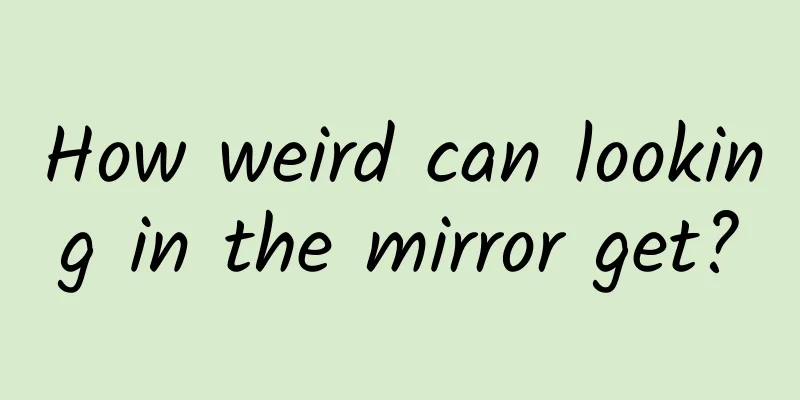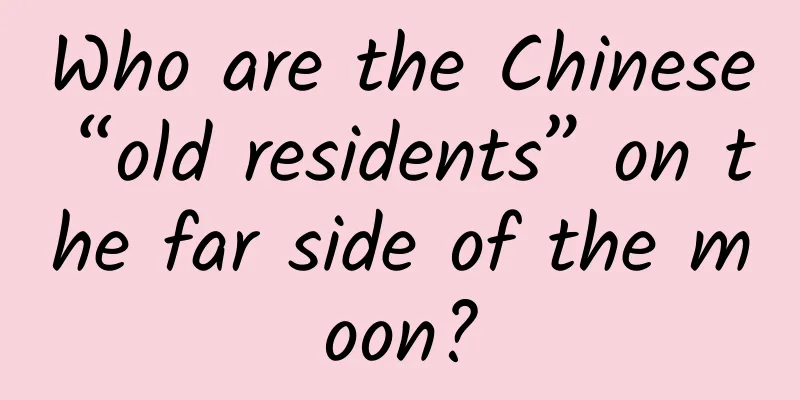How weird can looking in the mirror get?

|
© Hardcore Gaming 101 Leviathan Press: "I am a person who is afraid of mirrors/Not only facing impenetrable glass/but also a non-existent, uninhabitable space/reflecting, ending and beginning", the poem "Mirror" by writer Borges shows us a deep fear: the universe is nothing but that mirror and a reflection of itself, which reproduces the world through infinite mirror images. Mirrors are also the motif of many literary works, and they appear repeatedly in "Alice Through the Looking Glass" and "Snow White". In addition, the mirror is also an important reference and benchmark for the formation of self-cognition. Lacan has an important "mirror theory". He believes that a newborn baby is an "undifferentiated" and "non-subjective" natural existence, belonging to the "pre-mirror stage" of chaos and no self. Infants at this stage have no sense of wholeness or individual unity, but only fragmented physical experience. The 6th to 18th month of the baby's growth period is the "mirror stage". During this period, the baby can gradually recognize the image of his own body in the mirror and identify his real body with the self in the mirror. This is consistent with the underlying logic of the famous mirror test: whether each species sees an enemy, a friend, or themselves in the mirror is related to the nature of self-awareness. Las Vegas, also known as Sin City, has something even scarier waiting for visitors to venture in, beyond the dazzling lights of the city's avenues. This is the haunted museum of famous ghost hunter Zak Bagans. There are ghostly memorabilia on display, from Ted Bundy’s glasses to Charles Manson’s bone fragments, scraped from the incinerator after his body was cremated. There is also an ordinary-looking mirror in the museum, about two feet high, shaped like a tombstone. Bagans once said that among the many collections, this one made him most uneasy. Mirrors in the Haunted Museum. © Elizabeth Page Brumley/Las Vegas Review-Journal The mirror was allegedly once owned by Bela Lugosi, the actor who played Dracula. He tried to use the mirror to channel his late wife, but it attracted some uninvited mortal corporeal visitors. The next owner of the mirror was murdered, and in the years that followed, successors gave interviews claiming to see a shadowy entity floating in the mirror. Some even claimed to have been attacked and woken up covered in wounds. Lugosi is likely not the first victim of a horror story about reflections. Legends about the magic of mirrors go back a long way. “The earliest well-documented story involving mirror reflections is the Narcissus story,” says Elizabeth Tucker, a folklorist who studies the paranormal at Binghamton University. The ancient Greek myth tells of a handsome young man who became so obsessed with his own reflection in water that he spent hours gazing at it. The ancient Romans believed that a mirror could trap a soul, which would take seven years to regenerate - and those unfortunate enough to break it would suffer seven years of bad luck. © JOVO MARJANOVIC /EYEEM/GETTY IMAGES The story doesn’t stop there. The ancient Romans believed that mirrors had the power to trap souls; they also believed that it took seven years for the soul to regenerate itself, and while it was a common superstition that breaking a mirror would result in seven years of bad luck, the mirror’s alleged magical powers would grow stronger over time, and could even predict the future. "In the Middle Ages, we start to use reflective objects (mirrors or buckets of water) to actively communicate with spirits," Tucker said. These appear to be the earliest rituals of "love magic" that used reflection. “If you do it right, you can summon the face of your beloved,” Tucker said. The superstition has been around since the Middle Ages. Early 20th-century Halloween cards showed young women staring into mirrors with rhyming lines like, “Look into the glass, on Halloween night, and you’ll see your husband’s face.” (No easy feat: If the woman was destined to die before her wedding, she’d see only a skull.) In the early 20th century, Halloween postcards often depicted young women using mirrors as a form of "love magic", hoping to see their future husbands in their reflection. © TRANSCENDENTAL GRAPHICS/GETTY IMAGES Lately, Tucker has noticed a shift in that narrative. Instead of seeking to foresee the faces of loved ones, mirror-gazers are trying to summon something frightening. Among the most popular of these fear-seeking recreational rituals is Bloody Mary, where chanting the name of a spirit is said to cause her to appear in the mirror. Strange faces in mirrors are also a staple of horror movies, appearing in everything from Candyman to Disney's psychological horror The Watcher in the Woods. YouTube is full of amateur filmmakers who claim to have captured a sinister voyeur in a mirror. In the 2010 Oscar-winning thriller Black Swan, subtle differences between the main character and her reflection are often used to heighten the sense of eeriness. Mirrors are also a common feature of the haunted house industry. Leonard Pickel, owner of Houtrepreneurs, which has been designing haunted houses for more than 40 years, said, "The subconscious mind is always looking for danger. It is always observing things and trying to determine whether they are safe or not." He said, "When the brain can't tell whether it is a friend or an enemy, the hair will stand up unconsciously, and you will feel creepy." Mirrors provide atmosphere and plot twists in Candyman and many other horror and thriller films. © COLLECTION CHRISTOPHEL/ALAMY While we’re primed to look for potential threats in anything we don’t expect, psychologically, it’s particularly unpleasant when the reflection doesn’t match our expectations. “We’re all very good at looking in the mirror and appreciating ourselves,” says Joanna Mash, a doctoral candidate in psychology at the University of Hertfordshire in the UK. “You have built-in expectations of what you see in the mirror.” The familiar face in the mirror is intrinsically linked to self-awareness. As Mash says, “It’s very alarming when you don’t see a familiar face in the mirror.” © Identity Magazine The phenomenon of seeing something in the mirror that isn’t you isn’t confined to Hollywood and haunted houses. In fact, our brains are quick to misinterpret what we see in the mirror, and we often scare ourselves in the process. Twenty years ago, University of Urbino psychologist Giovanni Caputo was studying dissociative identity disorder (formerly known as “multiple personality disorder”), in which patients have multiple psychological personalities, often as a coping mechanism for extreme trauma.[1] The researchers set up an experiment to examine the patient's self-awareness, surrounding him with eight mirrors. The subject noted that his face seemed to change in dim light. Caputo was intrigued. "I tried to explain it scientifically, but it's really an individual case," he said. Strange face illusion phenomenon: First, use multiple mirrors under dim lighting conditions, and you will see a face in the mirror that does not belong to you. © JUSTIN CASE/GETTY IMAGES In 2010, Caputo published the first description of “strange-face illusions”[2]. He showed that people often see their faces distorted when they stare into a mirror in dim light. Some people see their own facial distortions, while others see the faces of deceased relatives or even monsters. (Subsequent experiments have shown that you don’t even need a mirror to produce face illusions. You can focus on another person’s face, or even a mask.) However, these terrifying visions are not paranormal. The process of receiving information with the eyes and decoding it with the brain is like a game of telephone . If the lights are too dim and we are too focused , the information may be garbled. Marsh has conducted experiments with strange faces and even experienced the illusion herself. "I saw facial distortions that were almost not my face, but not completely alien," she said. She believes that people who are better at focusing their eyes in one place tend to see more distortions. "I was disappointed that I wasn't myself for a moment," she joked. © Autoservice AI “Our visual experience is constructed in the brain, but it is not what we actually see.” Marsh has been looking to explore what’s so interesting about the strange face illusion, but she added, “When I did this experiment, some people did freak out about it. Ultimately, I think it just demonstrates to people that our visual experience is a construct in our brain, but it’s not really what we see.” Caputo suspects that strange face illusions are at the heart of mirror hauntings. This could even explain the enduring popularity of Bela Lugosi’s haunted mirror, though the stories surrounding it have become increasingly outrageous over time. For one thing, as the Skeptical Inquirer reported,[3] Lugosi, among other things, showed an interest in the occult, and he never lived with the mirror in his home. However, Hollywood lawyer Peter Saletri did, and was brutally murdered in 1982 in a case that remains unsolved. So, what the mirror really reflects may be the superstitions and fears that humans have had for a long time. The root lies in how our brain processes when we see something that doesn't quite fit our cognition. © Giphy References: [1]pubmed.ncbi.nlm.nih.gov/26112448/ [2]www.researchgate.net/publication/46280355_Strange-Face-in-the-Mirror_Illusion [3]skepticalinquirer.org/exclusive/a-closer-look-at-the-bela-lugosi-haunted-mirror/ By Kate Golembiewski Translated by Zhao Hang Proofreading/Left and Right Original article/www.atlasobscura.com/articles/haunted-mirrors-strange-face-illusion This article is based on the Creative Commons License (BY-NC) and is published by Zhao Hang on Leviathan The article only reflects the author's views and does not necessarily represent the position of Leviathan |
<<: Do you have lumbar disc herniation at a young age? This can relieve the pain
>>: Trivia | He Shen actually has the same surname as Zhen Huan, not He!
Recommend
GSMA: 50% of Chinese consumers hope to buy 5G mobile phones as soon as possible
Smartphones will remain the dominant consumer dev...
Five elements of user reach: materials, channels, and objects!
My definition of user reach is: sending specific ...
4 bad habits in the kitchen may cause family members to suffer from cancer!
Planning丨Yinuo Editor: Yinuo Visual丨Zhang Shan Re...
How to write excellent promotional copy?
For many operations and promotion personnel, crea...
How to use data from wearable devices for health monitoring
【51CTO.com Quick Translation】 With the advancemen...
How does QR code marketing increase the scanning rate?
In the future, data will serve as a factor of pro...
The official iPhone system has been updated, and data can finally be migrated!
For iOS, which is perhaps the most user-friendly ...
How much does it cost to invest in Shaoxing’s automatic ordering app? What is the investment price for Shaoxing’s automatic ordering app?
How much does it cost to invest in the automatic ...
Why do our fingers or toes get wrinkled after being in water for a while?
If the hairless skin on a person's fingers, t...
Why is the new coronavirus always one step ahead of others?
As long as there are susceptible people, the viru...
“Deregistering your mobile number is equivalent to betraying yourself”? @Everyone, you must do these things before changing your mobile number!
These two days Topic: "Canceling your phone ...
Audi uses projection to replace the central control screen, allowing you to lie in the car and watch movies
Autonomous driving is getting closer and closer t...
Beware! The local honey you bought may just be syrup! This article teaches you how to distinguish
Audit expert: Wang Guoyi Postdoctoral fellow in N...
He committed a crime but acted as if nothing had happened. Can a lie detector expose his excellent acting skills?
Tang Yicheng In the fairy tale, Pinocchio's n...
CES 2016 preview: Automotive technology and augmented reality will take center stage
[[161239]] Every year at the beginning of the year...









